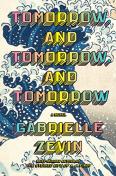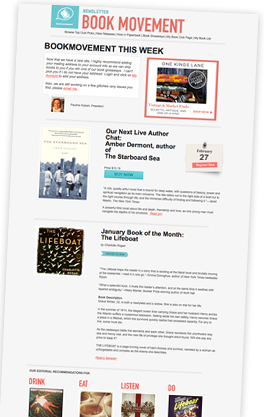BKMT READING GUIDES
Tomorrow, and Tomorrow, and Tomorrow: A novel
by Gabrielle Zevin
Hardcover : 416 pages
271 clubs reading this now
8 members have read this book
Introduction
NEW YORK TIMES BEST SELLER • Sam and Sadie—two college friends, often in love, but never lovers—become creative partners in a dazzling and intricately imagined world of video game design, where success brings them fame, joy, tragedy, duplicity, and, ultimately, a kind of immortality. It is a love story, but not one you have read before.
"Delightful and absorbing." —The New York Times • "Utterly brilliant." —John Green
One of the Best Books of the Year: The New York Times, Entertainment Weekly, TIME, GoodReads, Oprah Daily
From the best-selling author of The Storied Life of A. J. Fikry: On a bitter-cold day, in the December of his junior year at Harvard, Sam Masur exits a subway car and sees, amid the hordes of people waiting on the platform, Sadie Green. He calls her name. For a moment, she pretends she hasn’t heard him, but then, she turns, and a game begins: a legendary collaboration that will launch them to stardom.
These friends, intimates since childhood, borrow money, beg favors, and, before even graduating college, they have created their first blockbuster, Ichigo. Overnight, the world is theirs. Not even twenty-five years old, Sam and Sadie are brilliant, successful, and rich, but these qualities won’t protect them from their own creative ambitions or the betrayals of their hearts.
Spanning thirty years, from Cambridge, Massachusetts, to Venice Beach, California, and lands in between and far beyond, Gabrielle Zevin’s Tomorrow, and Tomorrow, and Tomorrow examines the multifarious nature of identity, disability, failure, the redemptive possibilities in play, and above all, our need to connect: to be loved and to love.
Editorial Review
No Editorial Review Currently AvailableDiscussion Questions
Let’s first talk about the significance of the book title. How does the title, which is borrowed from the famous Macbeth speech, relate to the themes of the story as a whole?Did you like the setting in the world of video game design?
Why were Sam and Sadie so drawn to video games as teenagers at the hospital? What did it offer them?
And on a similar note, why did they both want to create video games as adults?
Especially during this era, Sadie is one of the few woman video game designers. Why were women undervalued in gaming?
What are your thoughts on Sam and Sadie’s friendship throughout the years?
While they both say I love you, they never become lovers. Why is that? Do you agree with Sadie that they are closer than lovers?
Let’s talk about Sam’s tragic backstory and how it impacted how he viewed the world.
Marx is a major character of the novel and if it weren’t for him, the video game might never have happened. Why do you feel people didn’t really take Marx that seriously?
What was your impression of the romance between Sadie and Marx?
How did Marx’s murder change everything for Sadie and Sam?
Instead of coming together in grief, Sadie pushes Sam away and even blames him for what happened to Marx. Let’s talk about how Sam’s video game brought them back together in a small way.
What do you think happens next for Sam and Sadie? Will they create another video game? Do you think they will ever be in a romantic relationship?
From bookclubchat.comfrom the publisher:
1. Describe the types of “love” shared among Sadie, Sam, and Marx. What catalyzes the shifts in their relationships over the years? Consider Sadie’s explanation to Sam about why they never got together: “Lovers are . . . common. Because I loved working with you better than I liked the idea of making love to you. Because true collaborators in this life are rare” (page 393).
2. How does Dov set the standards for Sadie’s work as a game designer, as a woman, and as a wife/partner to both Sam and Marx? What compels her to keep him in her life even after they break up?
3. Sadie considers how their experience as designers would have been different if they were born a decade (more or less) before or after when they were born. Technological advances aside, what else would have been different about their story if it was shifted slightly in time? Consider Sadie and Dov’s relationship, the options for Sam’s foot, the proliferation of mass shootings, and other cultural and social events.
4. Marx’s main creative role is as an actor, which is limited to his time in college. How does he continue to contribute to the creative process with Sam and Sadie—as producer, muse, organizer, and more? What does his participation suggest about the various ways in which one participates in art beyond being an artist?
5. If you were in their shoes, would you have taken the deal with Cellar Door Games or Opus Interactive to produce Ichigo? How would the novel have turned out differently if they had chosen Cellar Door?
6. How does Sam’s foot—while it’s injured and after it’s been amputated—shape his sense of self? Consider his reflections on gender, sexuality, and pain, including how he constructs his avatar as Mayor Mazer. How do the sensitivities of his relationship with this part of his body improve and damage his relationships with the people he loves?
7. The novel bends its narrative form to assume the structure of the games in various places—namely, Both Sides, the NPC, and Pioneers sections. How did your reading experience shift in those sections? Did the format enhance your immersion into the worlds the team was building, even through text alone?
8. Sam suffers numerous losses in the book—his mother, Anna; his friend and partner, Marx; his foot; his relationship with Sadie; his grandfather. How does gaming help him cope with his thoughts about his mother: “There are, he determines, infinite ways his mother doesn’t die that night and only one way she does” (page 172)?
9. Whom do you think deserves more creative credit for Ichigo and Mapleworld, their two most successful ventures—Sam or Sadie? How does the media’s interpretation of Sam as Ichigo and Mayor Mazer affect their working dynamic?
10. Do you think Sadie and Sam regret the choices they made for Mapleworld, given how the game’s political voice led to Marx’s death? Do you think Marx had any regrets?
11. What alternative “plays” during the shooting at Unfair Games could have caused Marx to live?
12. Marx muses while in his coma: “Memory, you realized long ago, is a game that a healthy-brained person can play all the time, and the game of memory is won or lost on one criterion: Do you leave the formation of memories to happenstance, or do you decide to remember?” (page 286). What do the characters in the novel decide to remember through their games? Do they acknowledge the role and value of happenstance in the creation of their real world and their imagined worlds?
13. From the title of the novel, to Sadie’s invocation of Emily Dickinson, to Marx’s epithet, “Tamer of Horses,” to Master of the Revels, there are many allusions to classical literature woven throughout the novel. What does this suggest about the nature of storytelling—how many ways can the same stories, emotions, and experiences be reinvented? Does the team believe they can create and are creating something new in their work, or are they finding new ways of expressing universal themes? What do video games offer a person in the form of entertainment, community, and growth that a play, a poem, or other art forms do not?
14. Discuss how the other game designers that join Unfair Games—Ant and Simon, and the Worths—contribute to the plot of the novel. What would they be if the novel was a video game?
15. What does taking over Dov’s class at MIT help Sadie understand about her life path, including the motives and conditions that helped her make Ichigo, as prompted by her conversation with Destiny?
16. Sadie notes that the kids in her class have a very different attitude toward telling their stories, in life and in games, compared to when she was growing up in the 1980s. How have you observed similar shifts within your own families and communities? How has technology shaped our modes of expression, sense of self-worth, and value systems, especially among teenagers?
17. What video games have you formed an attachment to in your life, as a child and/or as an adult? What about the gameplay, story, or characters drew you in and left an impression on you?
18. Both Sadie and Sam use games to explicitly memorialize their loved ones and process their losses. If you could design a game to change or preserve some part of your reality, what would it be like?
Book Club Recommendations
Recommended to book clubs by 2 of 4 members.
Book Club HQ to over 90,000+ book clubs and ready to welcome yours.
Get free weekly updates on top club picks, book giveaways, author events and more








